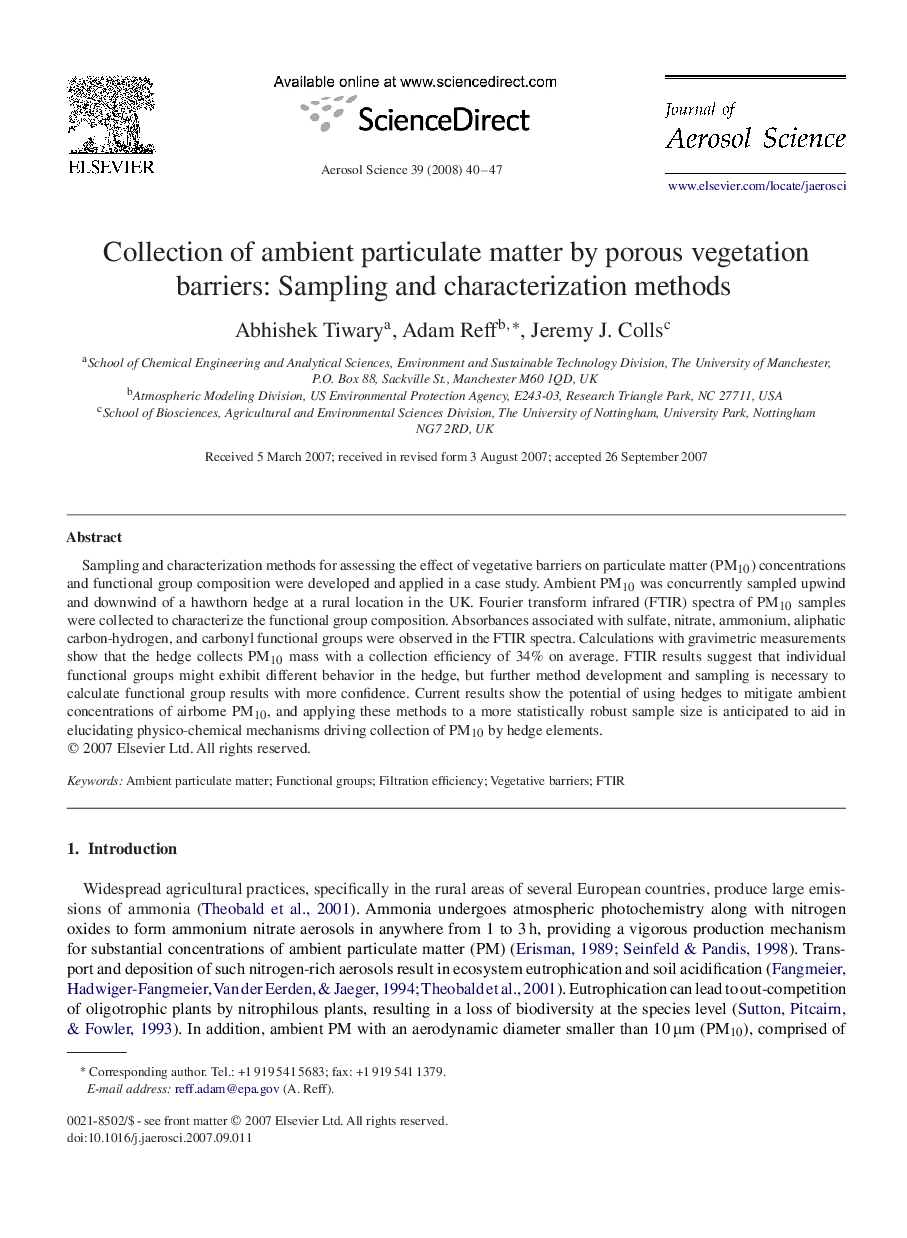| Article ID | Journal | Published Year | Pages | File Type |
|---|---|---|---|---|
| 4453147 | Journal of Aerosol Science | 2008 | 8 Pages |
Sampling and characterization methods for assessing the effect of vegetative barriers on particulate matter (PM10PM10) concentrations and functional group composition were developed and applied in a case study. Ambient PM10PM10 was concurrently sampled upwind and downwind of a hawthorn hedge at a rural location in the UK. Fourier transform infrared (FTIR) spectra of PM10PM10 samples were collected to characterize the functional group composition. Absorbances associated with sulfate, nitrate, ammonium, aliphatic carbon-hydrogen, and carbonyl functional groups were observed in the FTIR spectra. Calculations with gravimetric measurements show that the hedge collects PM10PM10 mass with a collection efficiency of 34% on average. FTIR results suggest that individual functional groups might exhibit different behavior in the hedge, but further method development and sampling is necessary to calculate functional group results with more confidence. Current results show the potential of using hedges to mitigate ambient concentrations of airborne PM10PM10, and applying these methods to a more statistically robust sample size is anticipated to aid in elucidating physico-chemical mechanisms driving collection of PM10PM10 by hedge elements.
